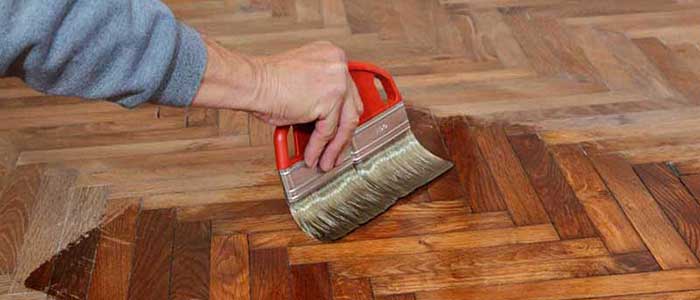Choosing the right type of finishing product for your floor is a pretty important stage of the whole renovation process. Of course, the finish has a lot to do with the final look and the whole appearance of the wooden floor and is also a matter of personal preferences and taste. Glossy, semi-glossy, matt, natural-looking, etc., the choice is, in fact, very extensive and there is something to suit every style. Although the finishing product adds a lot to the whole look of the floor, it has a more important meaning.
What type of finish to choose for your floor highly depends also on the floor itself and the wood species, do you need the hard-wearing option, or you can go with a natural-looking, which boosts the natural texture of wood, however, is not that resistant? In fact, the first thing you have to consider when choosing sealants and finishes is their functionality and the protection they give on the surface and for the whole structure, in general.
Before talking about finishes, it is really important to talk about sanding. There is no application of products, which is not preceded by the sanding treatment. Sanding is the initial process of every restoration and renovation of your flooring process. The procedure will remove all the imperfections on the surface, leaving it smooth and even, which also helps the uniform application of every product after. This is very important, especially for the application of products with colour pigments, otherwise, the pigments tend to highlight the defects.
Now, why sealing and staining are recommended always after sanding? First of all, for the even application all the bumps, worn finish and dirt build-ups have t be removed. Then, sanding also opens the wood’s pores. Wood has a porous structure and when the pores are open the liquid products adhere successfully to the structure, adding more protection and durability.
The two most popular types of wood floor finishes are lacquer and oil. Let’s talk about their benefits and when each of them is recommended.
Lacquer is the contemporary alternative to varnish. It protects the floor as a barrier on the surface, doesn’t sink like oil and also adds shine to it. Lacquer is very hard-wearing and is recommended for rooms, where heavy footfall and frequent traffic are an issue. In addition, lacquer is also water-resistant, however, because of the glossy finish, lacquered floors often suffer scratches and dents. Amongst all the wood floor finishes, lacquer is the most hard-wearing.
Oil, as the experts often consider, can be called the modern version of wax. Oil not only stays as a protective barrier on the surface but also penetrates the body of the floor and adds additional protection. Oil is always recommended to clients that enjoy the natural look of wood, because it is not as thick as lacquer, but not that hard-wearing and resistant. In addition, oiled floors need more maintenance, which includes re-oiling once a year.

Be the first to comment on this post.